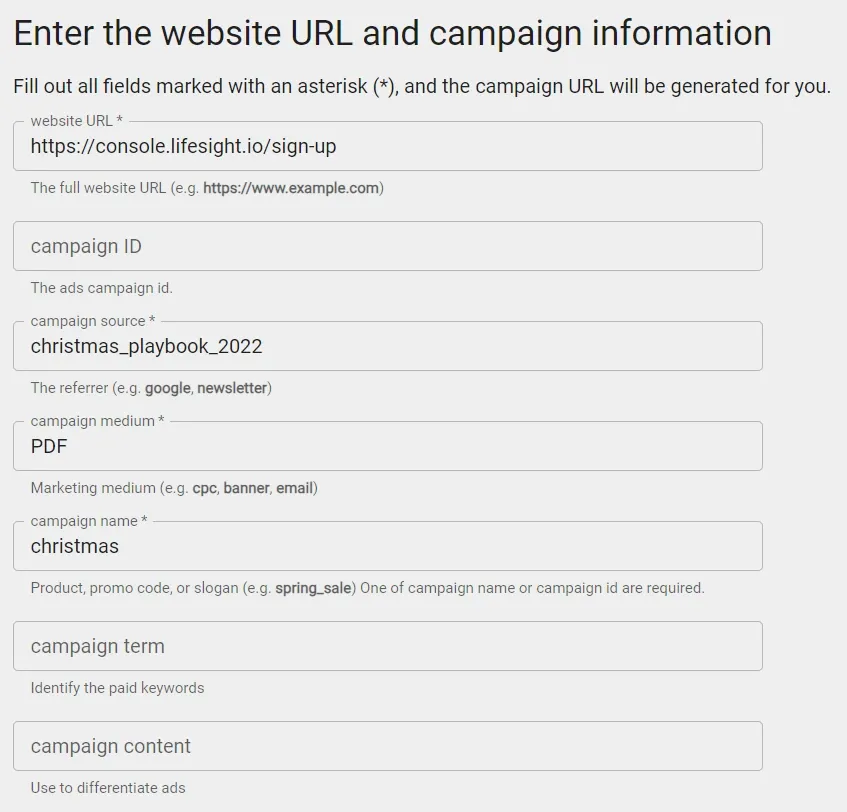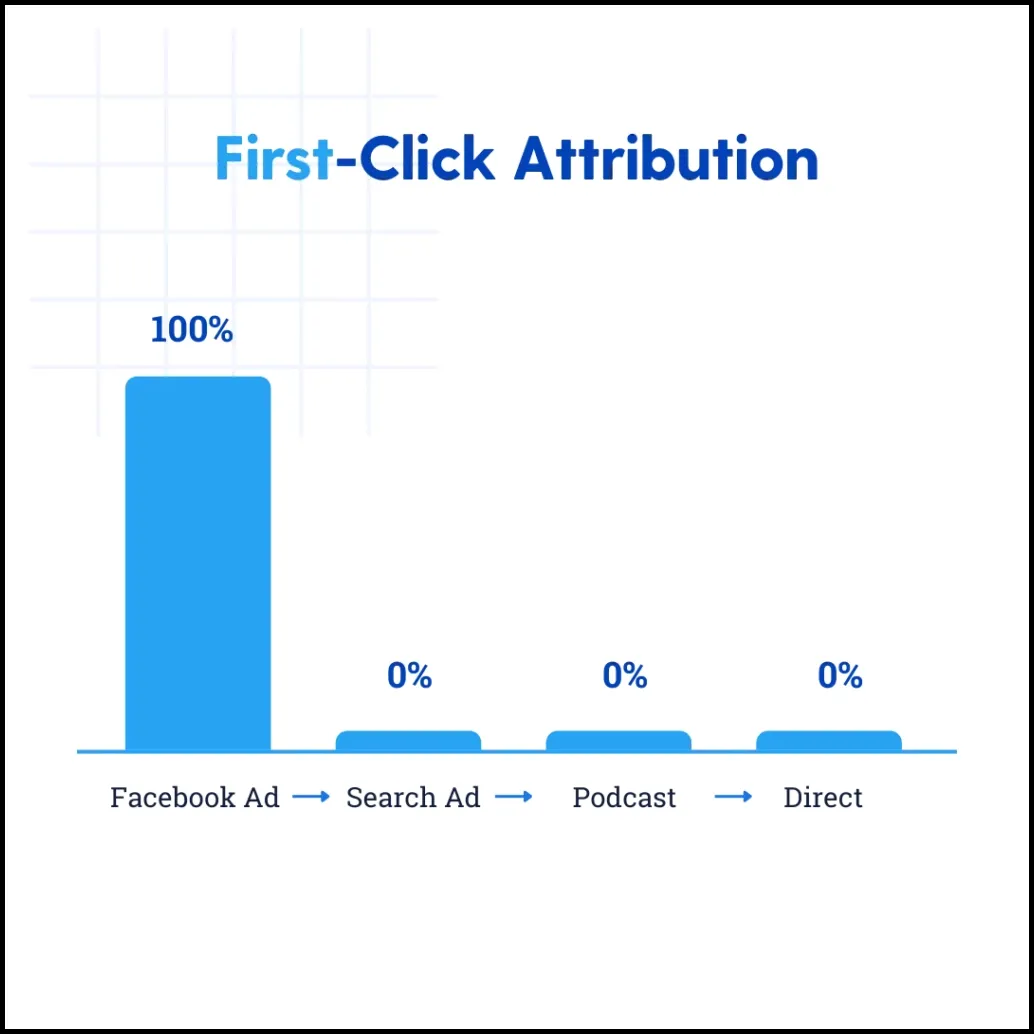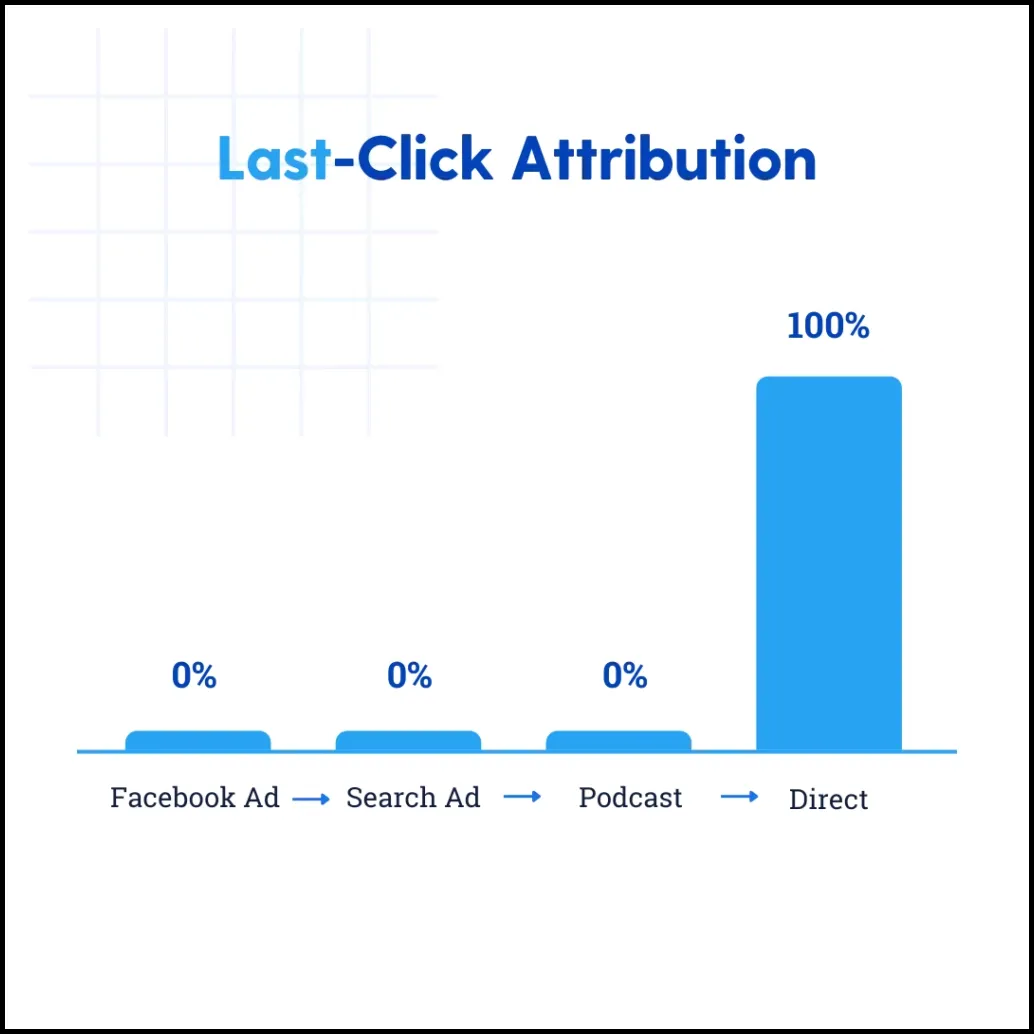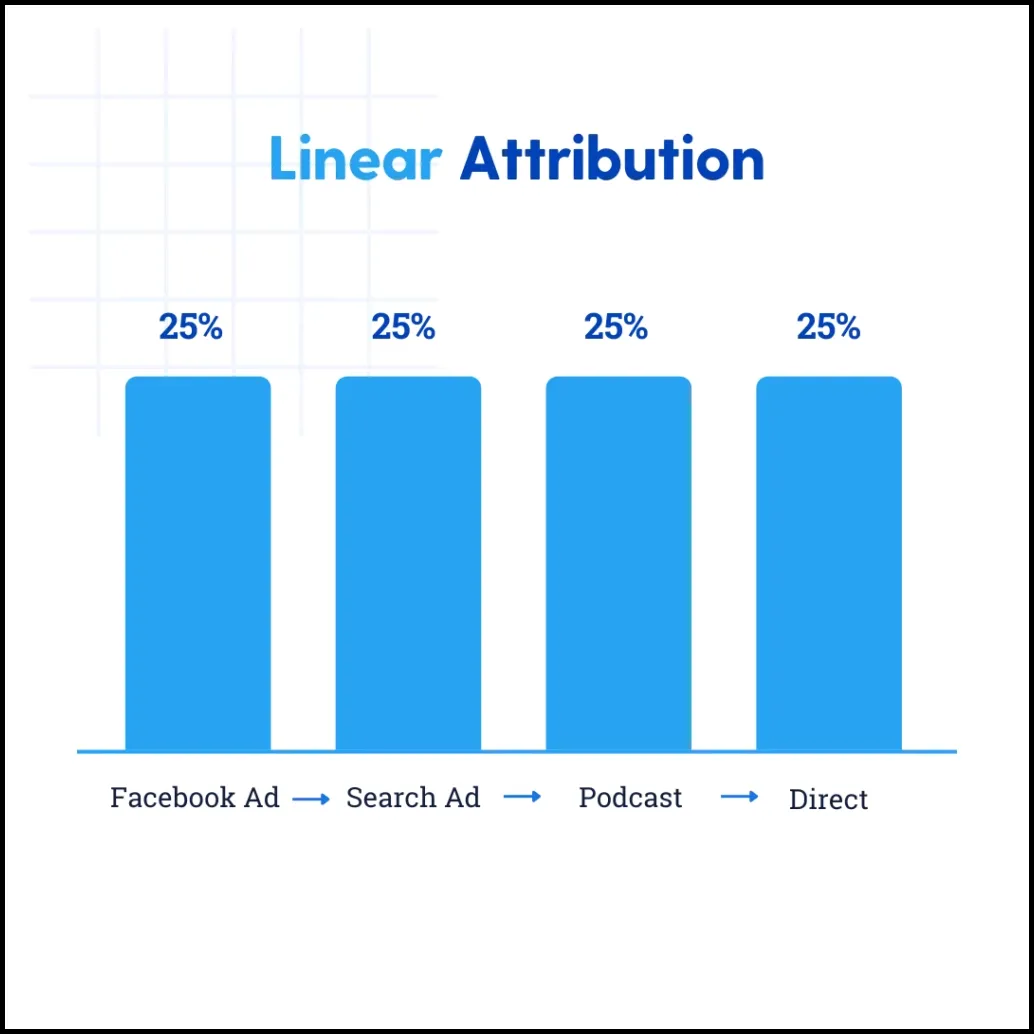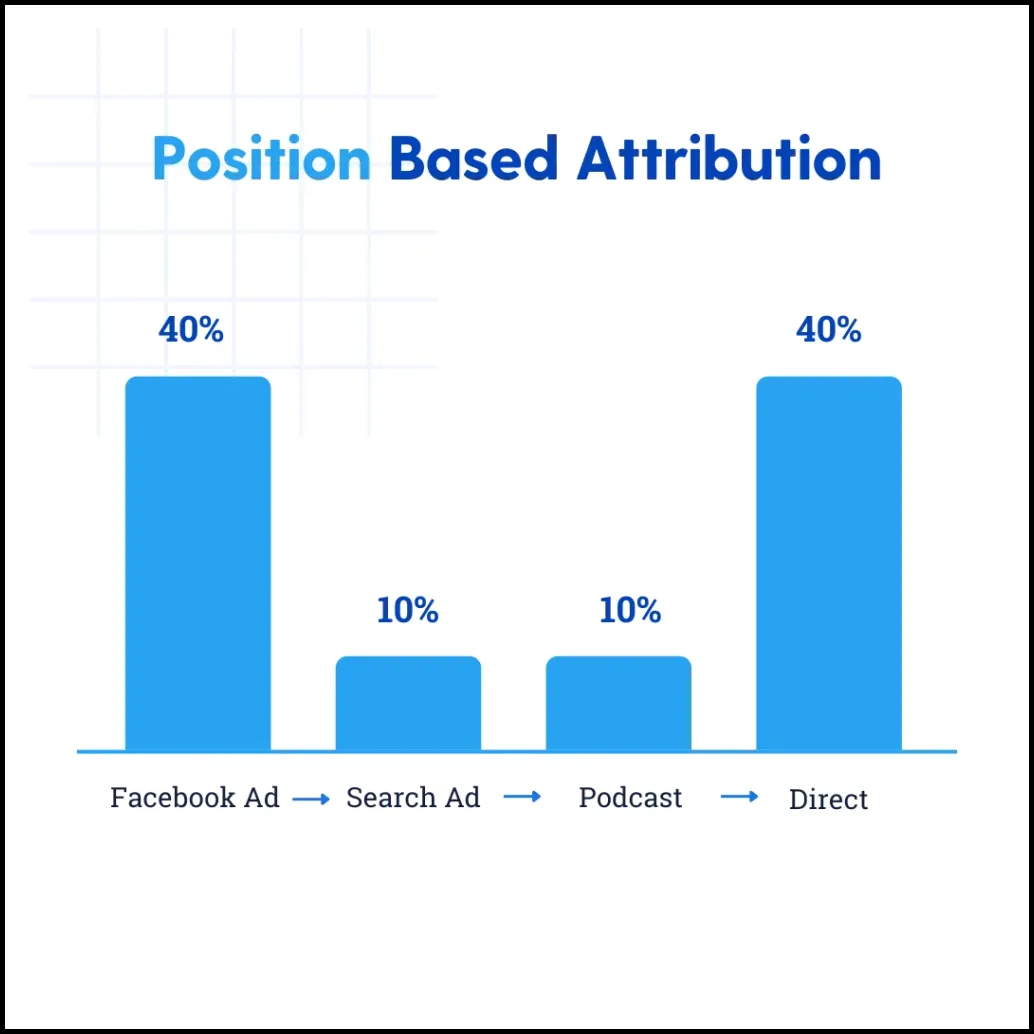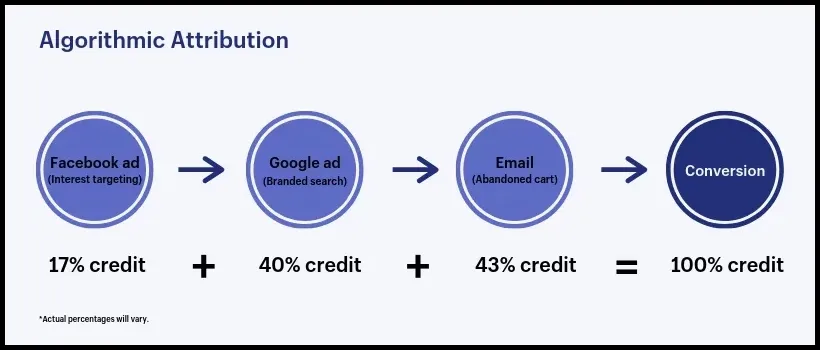The rise of various digital channels for marketing has given brands more opportunities than ever to engage with their customers and persuade them to make a purchase. However, this has also made the customer journey more complex, making it increasingly difficult to determine which channels are most effective in driving conversions.
Marketing attribution modelling can help address this challenge by giving you deeper visibility into your marketing efforts by analyzing data from various touch points along the customer journey. This will enable you to better understand which channels and campaigns are most effective at driving conversions.
This guide provides an overview of the best marketing attribution models available, as well as tips on how to implement them effectively. With the right marketing attribution platforms and insights, you’ll be able to gain a more comprehensive view of your customer journey and optimize your marketing efforts to maximize ROI.
What is marketing attribution?
Marketing attribution is the process of assigning credit for a sale or conversion to the various touchpoints in a customer’s journey. For Ecommerce businesses, incrementality adjusted attribution helps to understand the impact of different marketing efforts on the customer journey and determine the most effective channels for driving sales.
For instance, your Ecommerce brand may track your customer’s journey from seeing a social media ad to clicking on a Google search ad and finally making a purchase on your company’s website. Through marketing attribution, you can determine which touchpoints played the most critical role in the sale and allocate its marketing budget accordingly.
A report by Econsultancy shows that 66% of companies use attribution on some or all of their marketing campaigns and analyze the results of their attribution efforts to improve marketing results. The statistic reflects the importance of marketing attribution models in contemporary marketing strategies.
How to measure marketing attribution?
In the simplest terms, marketing attribution can be measured through marketing attribution models that take into consideration different aspects of the campaign to find the most effective ads. While there are multiple types of marketing attribution models, it is of paramount importance to comb through data collected online and measure the effectiveness of your marketing campaigns and allocate a budget based on the data collected online.
Benefits of marketing attribution
Implementing marketing attribution can be a challenging and time-consuming process, particularly when creating complex models that assess diverse datasets and customer touchpoints across all marketing campaigns. However, when performed correctly, marketing attribution analysis can yield numerous benefits, such as:
1) Better allocation of marketing budget :
Marketing attribution enables you to identify the most effective channels, campaigns, and touchpoints contributing to your desired business outcomes, such as conversions or sales. By accurately identifying these high-performing channels, you can make informed decisions about where to allocate your marketing budget to achieve maximum ROI.
2) Improved customer understanding :
By tracking and analyzing your customer journey, marketing channel attribution models enable you to gain a deeper understanding of your customers, their needs, and their preferences. They can then be utilized to optimize marketing campaigns and enhance the overall customer experience.
Additionally, attribution data can be leveraged to segment your customers based on their behavior and preferences. By identifying the distinct segments within the customer base, you can tailor your marketing campaigns to meet each segment’s specific needs and preferences. Attribution in digital marketing allows for a more personalized marketing experience that better resonates with your customers and increases the likelihood of conversion.
3) Data-driven decision-making :
Attribution marketing offers a comprehensive view of how customers interact with a brand across various touchpoints, providing insights into the effectiveness of different marketing campaigns. This information empowers you to make data-driven decisions about where to allocate your marketing budget, how to optimize campaigns, and how to enhance the overall customer experience.
4) Cross-channel optimization :
Marketing attribution offers a holistic view of the customer journey across all your marketing channels, empowering you to optimize your marketing efforts and deliver a seamless customer experience.
It also allows you to optimize your channel mix to get the most out of your marketing efforts. Experimenting with different combinations of channels and analyzing data can help you identify the optimal channel mix for your needs.
5) Testing and refining campaigns :
One of the key benefits of attribution modelling in marketing is the ability to test and refine campaigns. By analyzing which elements of a campaign are driving the most conversions, you can make informed decisions about how to adjust your marketing strategies to improve results. The insights gained from marketing attribution can also be used to optimize future campaigns.
Establishing the framework for a successful attribution modelling
Marketing attribution modelling is a powerful framework that enables you to analyze and attribute credit to the specific touchpoints or marketing channels that have contributed to driving conversions.
Now that the benefits of marketing channel attribution are clear, let’s delve into designing the best marketing attribution models that will enable you to gain valuable insights into the effectiveness of your marketing efforts.
1) Capturing UTM tags
UTM tags, also known as Urchin Tracking Module tags, are parameters that are added to the end of URLs in marketing campaigns to provide additional information that can be captured by analytics tools. By appending UTM tags to your URLs, you can track and measure the effectiveness of your campaigns, allowing you to make data-driven decisions to improve your marketing strategy.
There are five standard types of UTM parameters that can be used to analyze and classify incoming traffic effectively.
- Campaign Source (utm_source): This type of UTM parameter describes the website or main source where the link will be placed. For example, if you’re promoting a link to your store in an Instagram bio, you might tag it with utm_source=instagram.
- Campaign Medium (utm_medium): An important type of marketing attribution model, it describes the marketing activity being used. For instance, if you’re using the link to track traffic from a Google Ads campaign, you might label it utm_medium=cpc, indicating that it’s from a cost-per-click advertising campaign.
- Campaign Name (utm_campaign): The campaign name allows you to identify traffic from a specific campaign you’re running, even if it’s from the same source. For a branded search campaign, for example, you might use utm_campaign=branded%20search%20exact (spaces can be encoded as “%20” to avoid breaking the URL).
- Campaign Term (utm_term): It is used for tracking particular keywords you’re targeting if you’re running a Google Ads campaign.
- Campaign Content (utm_content): UTM parameter campaign content is helpful if you’re split-testing multiple ads. Case in point, track each ad to see which one is the most effective for driving traffic.
framework-for-attribution-modeling-capturing-utm-tags
Lifesight tip: You can create UTM tags using marketing attribution tools like Google’s Campaign URL Builder which is a free and user-friendly option that allows you to easily create UTM tags for your campaigns. Additionally, you can streamline the process by using UTM builder templates, ensuring consistency and accuracy across all your tracking links.
2) Capturing user-level data
To understand user behavior and improve marketing attribution, it’s important to gather data at the user level such as in-app events, clicks, logs, and other interactions. A crucial step in this process is assigning a unique ID to each user, which allows you to identify users and their interactions across various channels.
Marketing attribution analytics tools like Smartlook or Glassbox can help you identify devices and users, so you can track multiple devices for each user. This information is essential for cross-channel and cross-device attribution, and it helps you understand how users found your website or store, even without a UTM tag.
3) Capture conversion and revenue data
To establish a more comprehensive marketing attribution model, gathering data on conversions and revenue from your CRM is crucial. These data points are essential for understanding the success of different marketing channels regarding conversions, revenue, and ROI.
When it comes to extracting large volumes of data from your CRM, an extract, transform, load (ETL) solution such as Integrate.io and Fivetran can be helpful. ETL automates the data extraction process, retrieves the necessary data, applies necessary transformations such as standardizing naming conventions, and loads the data into a data warehouse, BI or visualization tool, or any other desired destination.
What are the different types of marketing attribution models?
Collecting data is only the first step in understanding the customer journey. To accurately gauge the effectiveness of your marketing campaigns, it is necessary to analyze the data using attribution models.
Here are some common types of marketing attribution models you can use to understand which touchpoints are most effective in driving conversions and which require further optimization.
1) First Touch Attribution
First Touch Attribution is a simple attribution modelling in marketing that attributes all the credit for a conversion to the first touchpoint a customer had with the brand before making a purchase. This model helps understand how customers first engage with your brand and the initial steps to visit your site for the first time.
For example, if a customer clicks on a Facebook ad before making a purchase, then the Facebook ad would receive all the credit. This information is very helpful if you are prioritizing demand generation and lead forms, as it helps you identify which actions are generating the initial connection between your brand and your potential customers.
types-of-marketing-attribution-models-first-touch-attribution
However, the first-touch attribution model has limitations. Since it only focuses on one single touchpoint, it tends to over-prioritize a channel that might not be the most important. In simpler words, it may not be very helpful if you are analyzing bottom-of-the-funnel conversions, which involve multiple touchpoints and channels.
2) Last Touch Attribution
Last Touch Attribution is a model that attributes 100% of the credit to the last touchpoint that a customer had before making a conversion. The model can be helpful when your primary focus is driving conversions and not too concerned about the non-converting touches.
However, the drawback to this attribution model in digital marketing is that it only tracks bottom-of-funnel marketing activity. The drawback is that it ignores all factors that influence a customer’s journey to purchase by focusing only on the final interaction. As a result, it is not very useful for measuring the channels that bring customers to your brand in the first place.
types-of-marketing-attribution-models-last-click-attribution
For example, a customer may discover you through a social post ad, find you on a video ad on YouTube, finally visit your site, and purchase through organic search. The only thing reported in this case would be the final organic search step. Using Last Touch marketing attribution modelling, you can’t tell what came before it, and you typically won’t give those other efforts the credit they deserve.
3) Linear Attribution
The linear attribution model is a multi-source attribution model that aims to identify all key touchpoints that were relevant in driving a purchase. Every touchpoint on the customer’s journey is given the same amount of credit in this model. Let’s take an attribution marketing example. If your customer was exposed to four touchpoints before making a purchase, each touchpoint would receive 25% of the credit.
types-of-marketing-attribution-models-linear-attribution
While the Linear attribution model helps identify all relevant touchpoints in the customer journey, there are drawbacks to using this marketing attribution modeling. Here all the touchpoints are credited equally, which means some high-performing points may get less credit than they deserve, and others may get more.
4) Time Decay Attribution
Time Decay Attribution is a marketing attribution model that gives more credit to touchpoints that are closer in time to the conversion. Suppose a customer is exposed to a touchpoint a week before making a purchase and another touchpoint just before making the purchase; the last touchpoint will receive the highest credit.
One of the key benefits of using Time Decay marketing Attribution is that it allows you to identify the channels or interactions that are most effective in pushing customers to the touchpoints that are driving conversions. This information can be used to optimize your marketing campaigns and improve your overall conversion rates.
However, the Time Decay model may undervalue lead generation and other top-of-funnel marketing activities because they typically happen relatively far away from the conversion.
Here is an illustration of how Time Decay Attribution works:
types-of-marketing-attribution-models-time-decay-attribution
5) Position-based marketing attribution
The position-based marketing attribution model, also known as the “U-shaped attribution,” is a refined approach that allocates 40% of the conversion credit to the first touchpoint and another 40% to the touchpoint immediately before conversion. The remaining 20% is distributed among the other touchpoints.
types-of-marketing-attribution-models-position-based-attribution
This model provides a more nuanced understanding of the impact of various touchpoints in a complex marketing and sales process. However, it is not always accurate to assume that the first and pre-conversion touchpoints are the most significant, which can be a drawback of this approach.
6) Algorithm Attribution
Algorithmic attribution is a highly effective approach to attribution modelling in marketing that relies on data analysis and mathematical algorithms. It takes into account various factors such as timing, duration, recency, conversion rate, and customer lifetime value to determine the impact of each touchpoint on the customer’s journey. The advantage of this model is that it can be customized to fit the needs of your business and optimize each touchpoint for maximum impact.
types-of-marketing-attribution-models-algorithm-attribution
How to optimize your attribution model?
Choosing an attribution model that offers clear insight into marketing effectiveness is only the initial step toward a successful marketing attribution. You need to constantly work towards optimizing your attribution model for better results. To enhance accuracy and overcome specific challenges, you can take the following measures:
1) Data quality
The success of your attribution model depends on the quality of your data. To optimize your model for data quality, consider implementing data hygiene processes to ensure that data is properly cleaned, standardized, and validated.
Additionally, you can ensure that you have reliable tracking and data collection mechanisms in place, such as UTM parameters, conversion tracking, and data validation checks.
One of the best marketing attribution platforms is HubSpot which allows you to measure and analyze the performance of your campaigns and marketing efforts through in-built dashboards, reports, and analytics.
Lifesight tip: Ensure that tracking is implemented correctly, establish data governance policies, and regularly monitor and audit the data to identify and correct any discrepancies.
2) Multiple conversion paths
Assigning credit accurately to each touchpoint that leads to conversion can be difficult as customers may follow different paths. Optimizing your attribution model for multiple conversion paths is essential to address this. One way to do this is by using a customized attribution model that considers the various paths to conversion.
Another approach is to use cohort analysis, which allows you to identify how different groups of customers behave and convert over time. By understanding the behavior of different customer segments, you can identify which touchpoints have the most impact on each group and allocate credit accordingly.
Lifesight tip: Use algorithmic attribution models that can analyze and allocate credit based on the impact of each touchpoint. These attribution models employ an econometric logistic regression framework to estimate the incremental number of purchases or conversions that can be credited to each channel.
3) Changing customer behaviors
As customer behaviors and preferences continuously change, it can be difficult to maintain an attribution model that accurately reflects these changes. To optimize your model for evolving customer behavior, consider regularly reviewing and updating your model to ensure that it reflects current trends and patterns.
Lifesight tip: Use machine learning algorithms to adapt to changing customer behaviors and preferences and adjust the attribution model accordingly. Additionally, you can use behavioral modeling to analyze customer risk, track spending behaviors, analyze purchase intentions, and implement loyalty programs to establish profitability.
4) Limited resources
Improving attribution models with limited resources can be a daunting task. To optimize this, you can focus on the most significant touchpoints and channels to allocate your resources effectively. By prioritizing what matters, you can make more informed decisions and adjust your attribution model as needed.
Lifesight tip: You can use marketing attribution software like Google Analytics, a free and user-friendly cross-channel attribution solution that accurately reports conversion totals across digital channels. Gain a consolidated view of your brand’s digital performance and build a deeper understanding of the customer journey without requiring specialized expertise or significant investments.
Conclusion
A clear understanding of marketing attribution is crucial for success in today’s business landscape. Knowing which channels are most effective in targeting potential customers saves time and resources while reaching the target market.
However, there’s no one-size-fits-all attribution model. Your ideal attribution model depends on your marketing campaign type and the desired outcomes. Thus, creating a customer journey map and attribution model, monitoring lead quality, and keeping campaign goals in mind throughout the process are critical.
By implementing the strategies mentioned in this blog, you can attain more accurate marketing attribution, optimize your campaigns, and achieve desired results.
You may also like
Essential resources for your success

